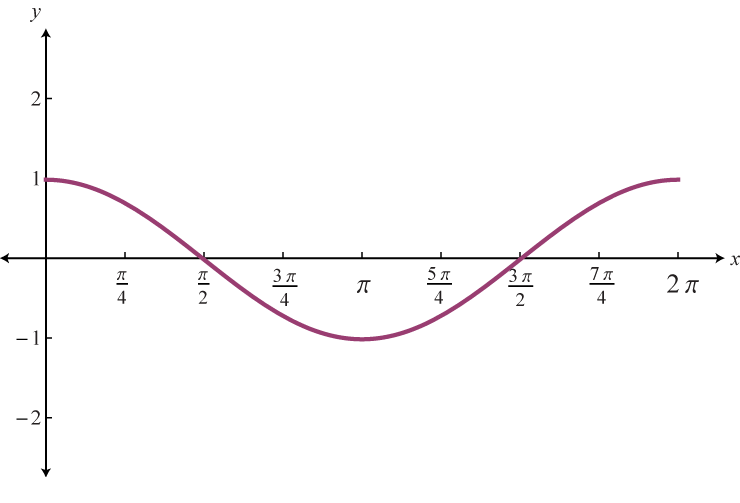

For this purpose, any angular unit is convenient, and angles are most commonly measured in conventional units of degrees in which a right angle is 90° and a complete turn is 360° (particularly in elementary mathematics).

In geometric applications, the argument of a trigonometric function is generally the measure of an angle. Parentheses are still often omitted to reduce clutter, but are sometimes necessary for example the expression sin x + y Historically, these abbreviations were first used in prose sentences to indicate particular line segments or their lengths related to an arc of an arbitrary circle, and later to indicate ratios of lengths, but as the function concept developed in the 17th–18th century, they began to be considered as functions of real-number-valued angle measures, and written with functional notation, for example sin( x). The graph y cos() 1 is a graph of cos shifted down the y-axis by 1 unit. Example: y sin() +5 is a sin graph that has been shifted up by 5 units. Today, the most common versions of these abbreviations are "sin" for sine, "cos" for cosine, "tan" or "tg" for tangent, "sec" for secant, "csc" or "cosec" for cosecant, and "cot" or "ctg" for cotangent. For an equation: A vertical translation is of the form: y sin() +A where A 0. The horizontal axis of a trigonometric graph represents the angle, usually written as theta, and the y y -axis is the sine function of that angle.
#COSINE GRAPH HOW TO#
6.1 Definition by differential equations While this might seem a little bit hard on many, reading this article will guide you on how to make a cosine curve in excel.This allows extending the domain of sine and cosine functions to the whole complex plane, and the domain of the other trigonometric functions to the complex plane with some isolated points removed.
#COSINE GRAPH SERIES#
Modern definitions express trigonometric functions as infinite series or as solutions of differential equations. To extend the sine and cosine functions to functions whose domain is the whole real line, geometrical definitions using the standard unit circle (i.e., a circle with radius 1 unit) are often used then the domain of the other functions is the real line with some isolated points removed. The oldest definitions of trigonometric functions, related to right-angle triangles, define them only for acute angles. Each of these six trigonometric functions has a corresponding inverse function, and an analog among the hyperbolic functions. Their reciprocals are respectively the cosecant, the secant, and the cotangent, which are less used. The trigonometric functions most widely used in modern mathematics are the sine, the cosine, and the tangent. Both b and c in these graphs affect the phase shift (or displacement), given by: text(Phase shift)(-c)/b The phase shift is the amount that the curve is moved in a horizontal direction from its normal position. They are among the simplest periodic functions, and as such are also widely used for studying periodic phenomena through Fourier analysis. In this section, we meet the following 2 graph types: y a sin(bx + c). They are widely used in all sciences that are related to geometry, such as navigation, solid mechanics, celestial mechanics, geodesy, and many others. In mathematics, the trigonometric functions (also called circular functions, angle functions or goniometric functions ) are real functions which relate an angle of a right-angled triangle to ratios of two side lengths.

All of the x-intercepts will stay the same, but whether the function is increasing or decreasing at that point will change.Basis of trigonometry: if two right triangles have equal acute angles, they are similar, so their side lengths are proportional.

Therefore, the y-intercept will be $-1$ instead of $1$. The other negative sign will reflect the function over the $x$ axis, which is also the midline. Therefore, the function $-cos(-x) = -cosx$. Example 5ĭescribe the function $-cos(-x)$. At /2 radians (90), and at /2 (90), 3 /2 (270), etc, the function is officially undefined, because it could be. it goes between negative and positive Infinity, crossing through 0, and at every radians (180), as shown on this plot. There are no other changes from the basic cosine function, so the equation for the graph shown is $y=2cos(2x)-2$. The Tangent function has a completely different shape. In fact, it is the same as the graph of sine with a horizontal shift of $\frac$ for $b$ yields $b=2$. This graph has the same shape and midline as the sine graph. The cos, or cosine, graph has a wave shape with a y-intercept of $1$ and a midline of $y=0$.


 0 kommentar(er)
0 kommentar(er)
